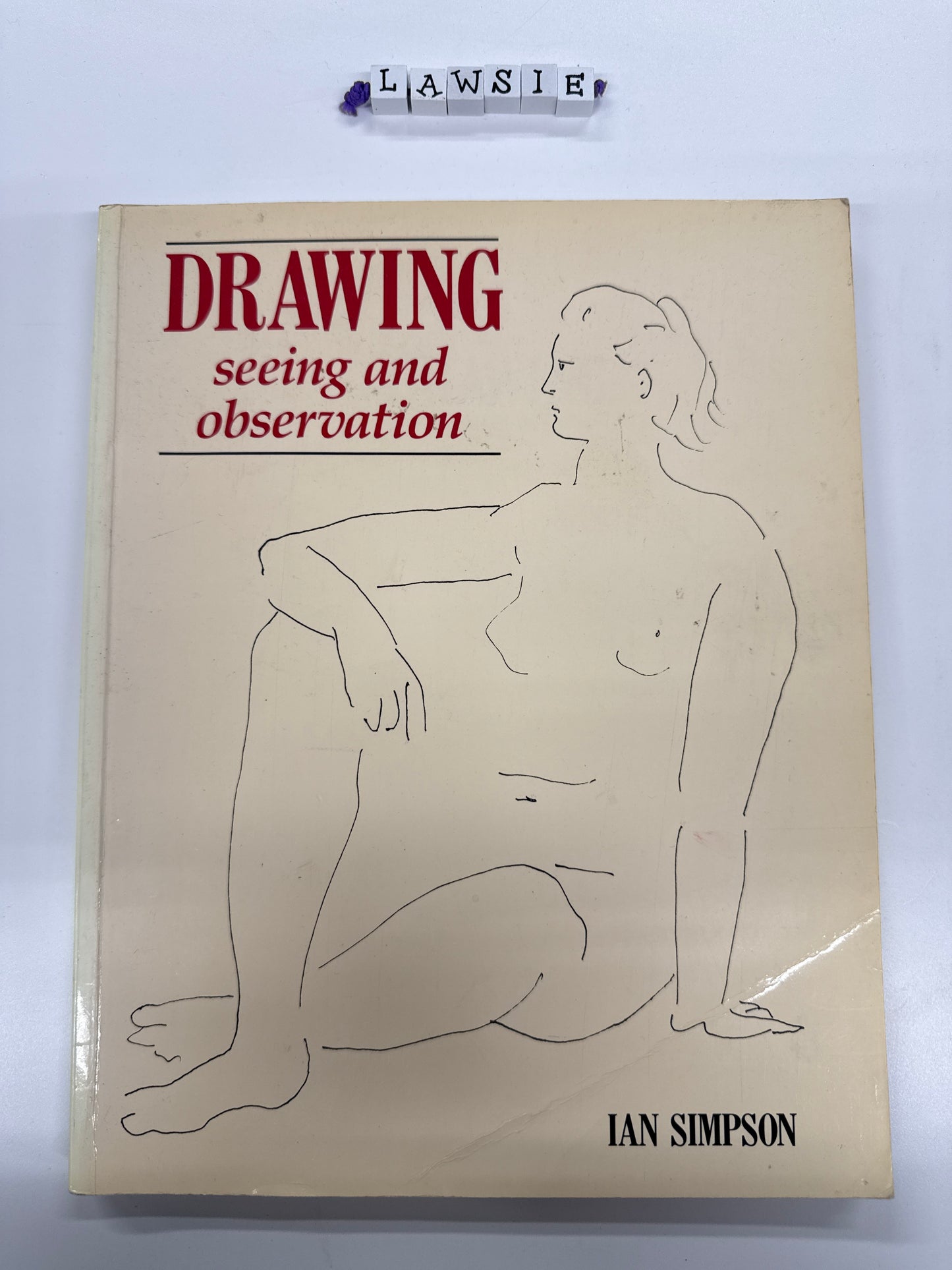Drawing seeing and observation by Ian Simpson
Drawing seeing and observation by Ian Simpson
This book is an introduction to learning to see and learning to draw. It does not assume much knowledge of drawing, but it is not intended only for beginners as it provides a basic course which is planned in a systematic way so as to allow people with considerable experience of drawing to re-examine the fundamentals. It is also true that little formal teaching of drawing now exists and students learn to draw, if they learn at all, in almost the same way as a person learns to play a musical instrument by ear. In the same way, they learn that while they can achieve a certain facility, their lack of understanding of the basic principles of drawing limits them severely.
It would be easy to dismiss learning to see and learning to draw as, in the first case, unnecessary and, in the second, impossible. I intend to show in the following chapters how, although most people can adequately find their way around the world we inhabit, and apparently see very well, they see in general terms and not in the specific way which is necessary for drawing. As for learning to draw, I maintain that it is demonstrably pos-sible, as long as it is seen in the right context.
Much has been made in recent years of the distinction between artists and designers. I do not consider that drawing should be restricted to artists only. Drawing has traditionally been done for a purpose and relatively few drawings in the history of art have been intended as an end in themselves.
The eventual end product may be produced by the application of an aspect of observation to a functional design just as readily as the application to the non-functional two- and three-dimen-sional fields of fine art.
This is not just a book for reading. To understand it you must participate in the practical work which is set out in the text from Chapter 1 onwards. It is intended as a guide which can extend an individual's ability to see and draw, or alternatively it can be used by a teacher as the basis for a systematic course in drawing. The illustrations in the book are basically of two kinds.
There are drawings by master draughtsmen, and others by myself, by colleagues and by students.
These are to illustrate specific points, but are not in any way a substitute for your own attempt to solve the problems posed. There are also photographs of 'situations' set up to illustrate particular points. These are sometimes groups of objects.
It is most important that you should appreciate that these photographs are not substitutes for the groups themselves. Drawing in the context of this book is concerned with looking at the three-dimensional world and recording information on a two-dimensional surface. Photographs are only two-dimensional and, as you will see
as you progress through the book, it is therefore necessary to examine the actual three-dimen-sional world if you are really to come to terms with drawing. The photographs of groups should be seen only as guides which will enable you to arrange or otherwise find your own objects for study.
Couldn't load pickup availability
Low stock: 1 left
View full details



